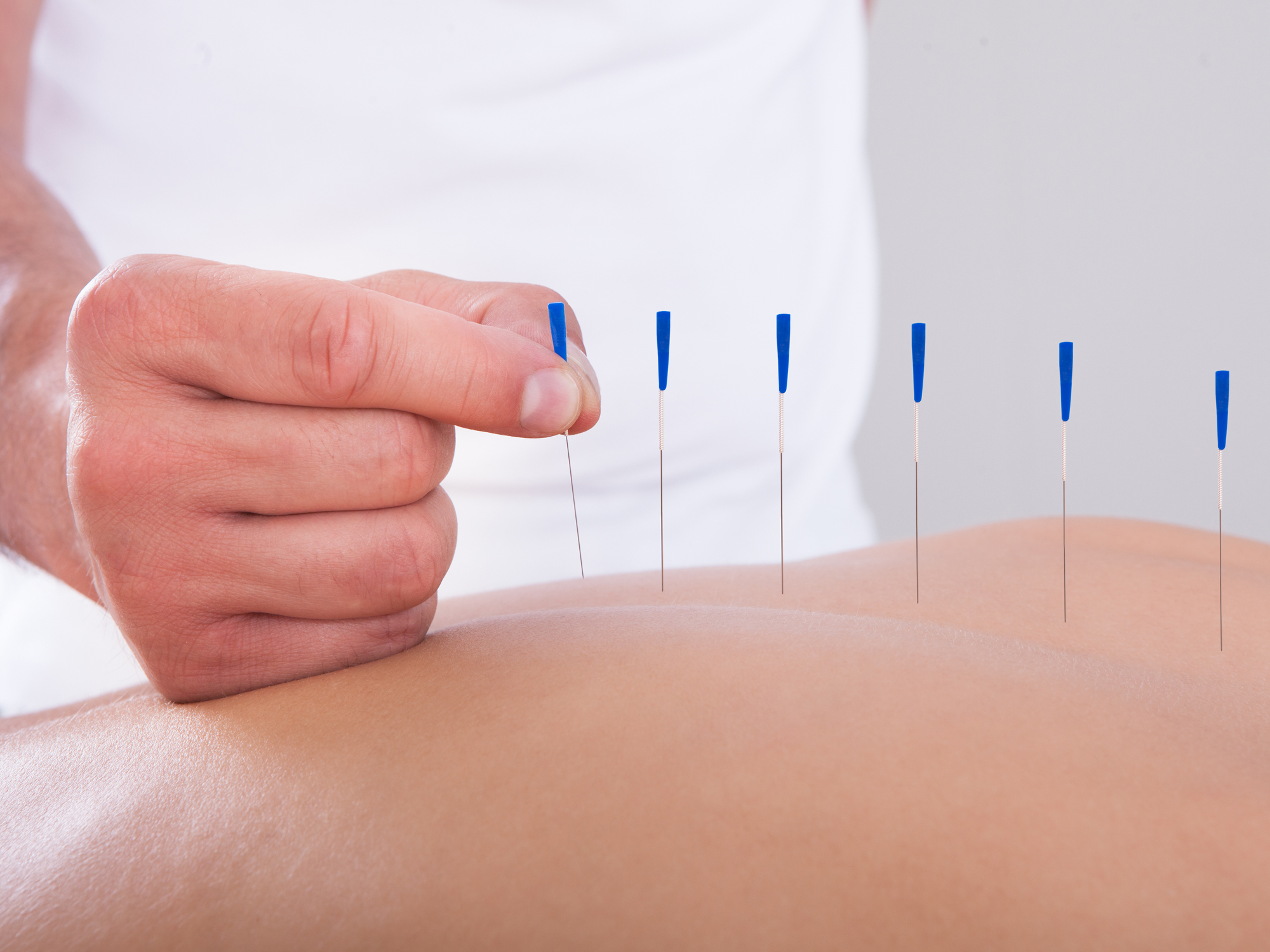Get Easy Health Digest™ in your inbox and don’t miss a thing when you subscribe today. Plus, get the free bonus report, Mother Nature’s Tips, Tricks and Remedies for Cholesterol, Blood Pressure & Blood Sugar as my way of saying welcome to the community!
Acupuncture shows promise for Parkinson’s

Medical science is slowly but surely catching up to the ancient healing ways.
Though thousands of years of trial and error and consistent use have shown the effectiveness of traditional healing — or as it’s sometimes called “alternative medicine” — it’s taken science-based modern medicine (as opposed to observational, evidence based) many trial studies and many decades to even begin to open their minds.
This is all well and good, as long as they don’t dismiss everything that has yet to be proven in clinical trials, since most of the treatments and methods have not been put to their preferred method of testing.
Acupuncture is one ancient method that has caught the attention of the modern medical community. It’s several thousand years old and has helped millions of people with everything from sprained ankles to pregnancy to the flu.
Over the years many schools and methods of acupuncture practice have evolved, including Korean acupuncture, French ear acupuncture, medical acupuncture (though I would argue they are all medical), and single point acupuncture. I have previously written about single-point acupuncture, and I was excited when a new study was published showing how a single acu-point was successful at treating Parkinson’s disease.
Here is a brief overview of the theory of acupuncture so we can then look at the study and see how the Traditional Chinese Medicine (TCM) view and the modern scientific findings match up.
Acupuncture basics
Acupuncture is a system of stimulating specific energy points on the human body. Stimulation is most often done with needles (classic acupuncture) that are inserted at specific angles and depths to stimulate energy movement. Points can also be stimulated by finger pressure (acupressure), or they can be stimulated by heating an herb on it or over it (moxibustion).
The points are linked together is specific sequences to create lines or channels of energy, commonly referred to as meridians. Each of the main meridians is related to a specific organ and named as such (e.g., the gallbladder meridian), although the channels actually have a different Chinese name.
The GB channel (for example) is known as “Shao Yang” and has a specific syndrome associated with it. This is important when using acupuncture and addressing illness because the Chinese names and syndromes are often more telling than the American way of memorizing organ names for points and channels. The gallbladder meridian begins at the side of the eye and ends at the little toe and has 44 acu-points that fall along it.
Each meridian is associated with specific health issues or energy patterns, and the energy in a specific meridian is at “high tide” for two hours at the same time each day, before the energy moves to its “paired” organ meridian system for the next two hours. For example, the gallbladder meridian (shao yang) is at full energy from 11pm-1am, where after the energy moves to the liver meridian (Jue Yin) from 1am-3 am, and so on to another organ in a 24 hour cycle. As such the liver and gallbladder are paired organs in TCM, and are taken as a combined unit for identifying patterns and treatment protocol.
The shao yang / jue yin (gallbladder / liver) pattern is characterized by conditions such as temple headaches, neck pain, photophobia, migraine, insomnia, anxiety, seizures, Parkinson’s, epilepsy, hip pain, and psychological disturbance.
I keep referring to the gallbladder meridian here because the recent study noted that acupuncture is increasingly used as an additional treatment for patients with Parkinson’s disease. Specifically, the point known as Yanglingquan or GB34 — the 34th point along the gallbladder channel.
GB34 – location and application
GB34 (Yanglingquan, or Yang Mound Spring) is located in a depression anterior and inferior to the head of the fibula, below the lateral aspect of the knee, in the tender depression (see diagram).
In TCM application this point is seen as being related to motor function, as benefiting the tendons, ligaments and joints, and when stimulated can relieve pain along the GB channel generally, among a list of other things.
The stimulation of GB34 is indicated for issues such as: hemiplegia, weakness, numbness and pain of the lower extremities, swelling and pain of the knee, hypochondriac pain, bitter taste in the mouth, vomiting, and jaundice among other things.
Acupuncture study on Parkinson’s disease
In 2014 BioMed Central’s Complementary and Alternative Medicine journal published the results of a study looking at a single acu-point’s (GB34) efficacy in treating Parkinson’s disease (PD). Researchers looked at brain activation via functional magnetic imaging in response to stimulation of a single acupuncture point, GB34. Twelve Parkinson’s patients were compared with 12 healthy subjects when acupuncture to this single point was administered on the right leg.
According to their findings, “acupuncture on GB34 activates the precentral cortex, precentral gyrus, and putamen in patients with PD; areas that are known to be impaired in patients with PD.”
When compared to the healthy subjects stimulated at the same point, the PD subjects showed “significantly higher brain activity in the prefrontal cortex and precentral gyrus, especially visible in the left hemisphere.” In addition, the imaging showed that “acupuncture evoked different brain activations in patients with Parkinson’s disease than in healthy participants.”
Because of this study, the researchers suggest that the prefrontal cortex and precentral gyrus be treated in cases of Parkinson’s disease, and the stimulation of GB34 was a strong candidate for a point to utilize in treatment.
I am pleased that a study like this was not done with sham acupuncture vs real, but with real acupuncture conducted on a disease group vs a healthy group, and that imaging was used to show how the brain activity was different in both groups. To me, this is quite strong “scientific proof” that there is a real effect to acupuncture, and not just a placebo response as many in the medical community surmise.













